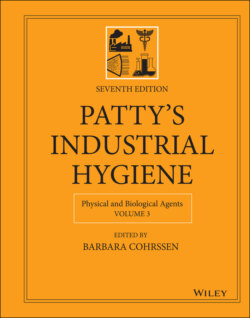Читать книгу Patty's Industrial Hygiene, Physical and Biological Agents - Группа авторов - Страница 53
11.1 Portable Survey Meters
ОглавлениеThe most commonly used survey meter is the ion chamber in which the ionization current is measured. Since a specific amount of energy is expended in creating a single ion (34 eV per ion in air), the ion current generated by the radiation within the ion chamber is proportional to the rate of energy transfer to the gas within the chamber. The same caveats regarding energy dependence and response time that applied to G–M counters also apply to ionization chambers. Generally, survey meters are relatively energy independent over a wide range of energies, from about 50 keV to about 3 MeV. The energy range can be extended downward by incorporating several windows of varying thickness into the instrument. For example, a window thickness of 10 mg cm−2 enables an ionization chamber to measure dose from 10 keV X‐rays. Ordinarily, ionization chambers are sensitive down to about 0.5 mrad h−1. However, the sensitivity can be greatly increased by increasing the gas pressure within the ion chamber. This presents the radiation with more atoms that can be ionized, thereby increasing the ion current from a given radiation field.
The measurement of dose rates using G–M and scintillation counters should be performed with caution, as these instruments measure individual ionizing events, rather than the number of charges created by the radiation. Both detectors need to be calibrated with a radiation source.
